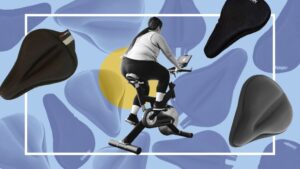The bicycle is one of the most efficient, cost-effective, and environmentally friendly means of transportation. It also provides a fantastic source of physical exercise. But not all bikes are made equal, and with that in mind, we’ve put together this guide to help you navigate the world of pedal power. Keep reading: Schwinn hybrid bikes
How to bike uphill without getting tired?
1) The turning radius of an average mountain bike increases as the distance from the center decreases, and where you place your feet is crucial. Sitting up a bit will help keep your front wheel on track.
2) Allow for appropriate ground clearance to ride over rough terrain such as rocks or tree roots: Your tires are designed to roll over smooth glassy asphalt, not jagged gravel that could cause damage and puncture through the casing. As in non-motorized bicycles, using low-pressure tires with less tread is more forgiving on rough terrain so that the brakes won’t seize up in an emergency.
3) Bring a helmet: If you are biking off-road by yourself or your child misses school for the day because of heavy snowfall, never underestimate how impressed society will be to see a two-year-old riding around without any protective headgear at all! Some helmets let children keep their heads up and protect them from a fall without the danger of hitting their heads on open ground or “bumping” into curbs or other obstacles.
4) Approach corners obliquely: When you round a corner, try to angle your bike in such that it is following one parallel track as opposed to two perpendicular tracks.
5) Keep an EYE out for hazards on the trail: Notice whether other bicycles and pedestrians are present. In cities, watch yourself as you weave through traffic (always being aware of all directions). Only bike cautiously when absolutely necessary, though: Be wary that cars or walkers may suddenly appear in your path while deciding which way to go!
6) Find a downhill route home: If it’s snowing or raining and the trail you are following is slippery, take it easy on occasion to travel downhill.
7) Plan your route home before setting out: By making a decision of which direction to go in advance and basing your planned path upon what hazards may be present while still respecting certain “rules” abovementioned (ease as opposed to speed), this will help avoid road rage incidents or getting lost if the gates at school are not open due heeding others ‘ directions.
8) Peek at the weather for road conditions: Every car and bus driver will check your bike against a white or black barrel, with yellow lines down their sides that indicate whether it is OK to pass (most often in either direction. However, occasionally only one side may be clear). Make sure yours has markings similar to this when you are on snow-covered streets! Many people opt not to risk riding sidewalks on icy surfaces but instead find themselves lost.
9) Treat intersections with dangerous drivers as if they were blind-spot when turning toward traffic.
10) If sidewalks and views on the road are gorgeous, do not be in a rush to cross intersections! Take your time, look at artwork or take pictures by ambling slowly so that you can savor each view more fully. Don’t worry about waiting too much longer than necessary. The chances are that other people have shared their experiences before you and have already had their fill.
11) Ride with no gear on dry roads: There is little to gain here, save for extra peace of mind by not having to worry about the noise made from your bike breaking or giving away your location each time you ride in order that it might be heard later (or at least the effect of a dose).
12) Use attached pedals as much as possible. If people are waiting behind you and you go off to the side of your riding group, make sure that one leg is not dangling as it would seem strange for someone passing behind a rider whose legs are both flipping rapidly forward.
13) Be prepared with tube repair kits, pump (and if possible, an extra tire )! This will save money in most areas; certainly, there must be more than 5 instances where bike shops have misplaced these items after hours without having due business reasons. For those of you who collect tires, have an assortment ready and try to get them used a few times before attempting their replacement (you can recharge the tubes by filling them with water).
14) Consider taking classes that are designed for patrolling cyclists. These may be more cost-effective than purchasing expensive bike locks or other components beyond your standard equipment, as well as providing valuable skills. The Knapsack Biker’s Toolkit is a good source of information for those willing to spend the few dollars it requires; a copy is included in my Nightrider 2.0 instruction manual and comes highly recommended. My new hand pump, though not at that level, also serves as an effective indicator of broken or missing equipment (for many cyclists).
15) Be aware that there are some areas where bicycle patrols have become routine and can detract from your enjoyment: You will always see officers on fire roads and other (often populated) trails. If you do ride these, please be cognizant of your position; let them know when there is a biker situation in the area or if someone may inadvertently endanger people with their intended behavior as to where they travel.
16) Not all officers will see what you’re doing within full sight of where your patrol should take place. I personally prefer being well ahead once maneuvering into a position to patrol; this allows me (and possibly your fellow cyclist) an opportunity to assess the situation and decide how best to proceed based on acting in good faith.
17) While it is possible for officers who do so without cause or personal desires, most will not have time to check all areas undetected – especially when in pursuit of anyone other than you.
Conclusion
Biking uphill is a tough workout, but it’s an effective way to build stamina and endurance. But don’t worry if you can’t handle it. There are plenty of other ways to get your cardio fix that won’t make you so tired!




